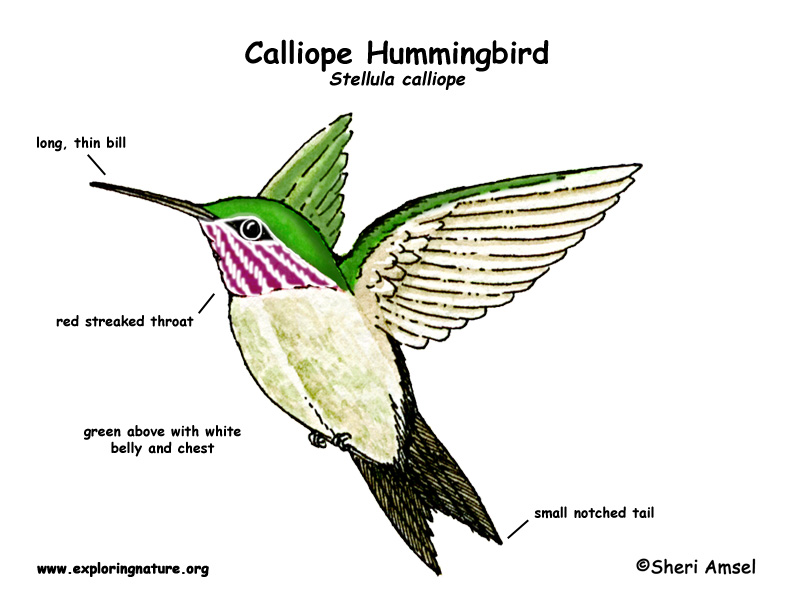

Spends the winter in southwestern Mexico. Breed up north from British Columbia, Canada, south into Washington, Idaho, Montana, Western Wyoming, Nevada and California.
They live in forests, meadows and brushy areas. They migrate over the desert.
They are the smallest bird in North America, growing to at most 4 inches and weighing 1/10 of an ounce. They are green above and light below. Males have a red-streaked throat. Females have a white throat.
It flies all the way down to southern Mexico for the winter, making it the smallest long distance migrator in the world.
They hover near tubular flowers collecting nectar. They also eat small insects and drink from feeders.
Female lays 2 tiny eggs.
Kingdom: Animalia
Phylum: Chordata
Subphylum: Vetebrata
Class: Aves
Order: Trochiliformes
Family: Trochilidae
Genus: Stellula
Species: S. calliope
When you research information you must cite the reference. Citing for websites is different from citing from books, magazines and periodicals. The style of citing shown here is from the MLA Style Citations (Modern Language Association).
When citing a WEBSITE the general format is as follows.
Author Last Name, First Name(s). "Title: Subtitle of Part of Web Page, if appropriate." Title: Subtitle: Section of Page if appropriate. Sponsoring/Publishing Agency, If Given. Additional significant descriptive information. Date of Electronic Publication or other Date, such as Last Updated. Day Month Year of access < URL >.
Amsel, Sheri. "Hummingbird (Calliope)" Exploring Nature Educational Resource ©2005-2024. December 13, 2024
< http://exploringnature.org/db/view/Hummingbird-Calliope >

